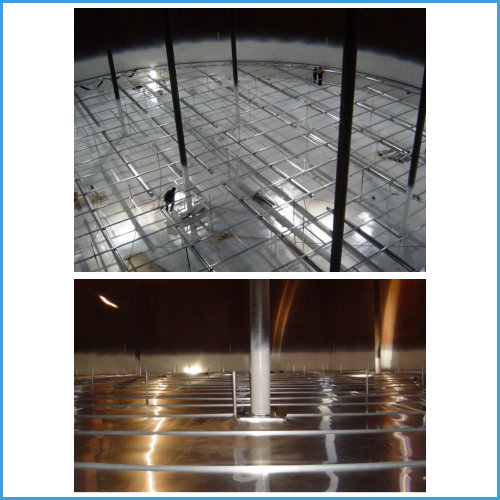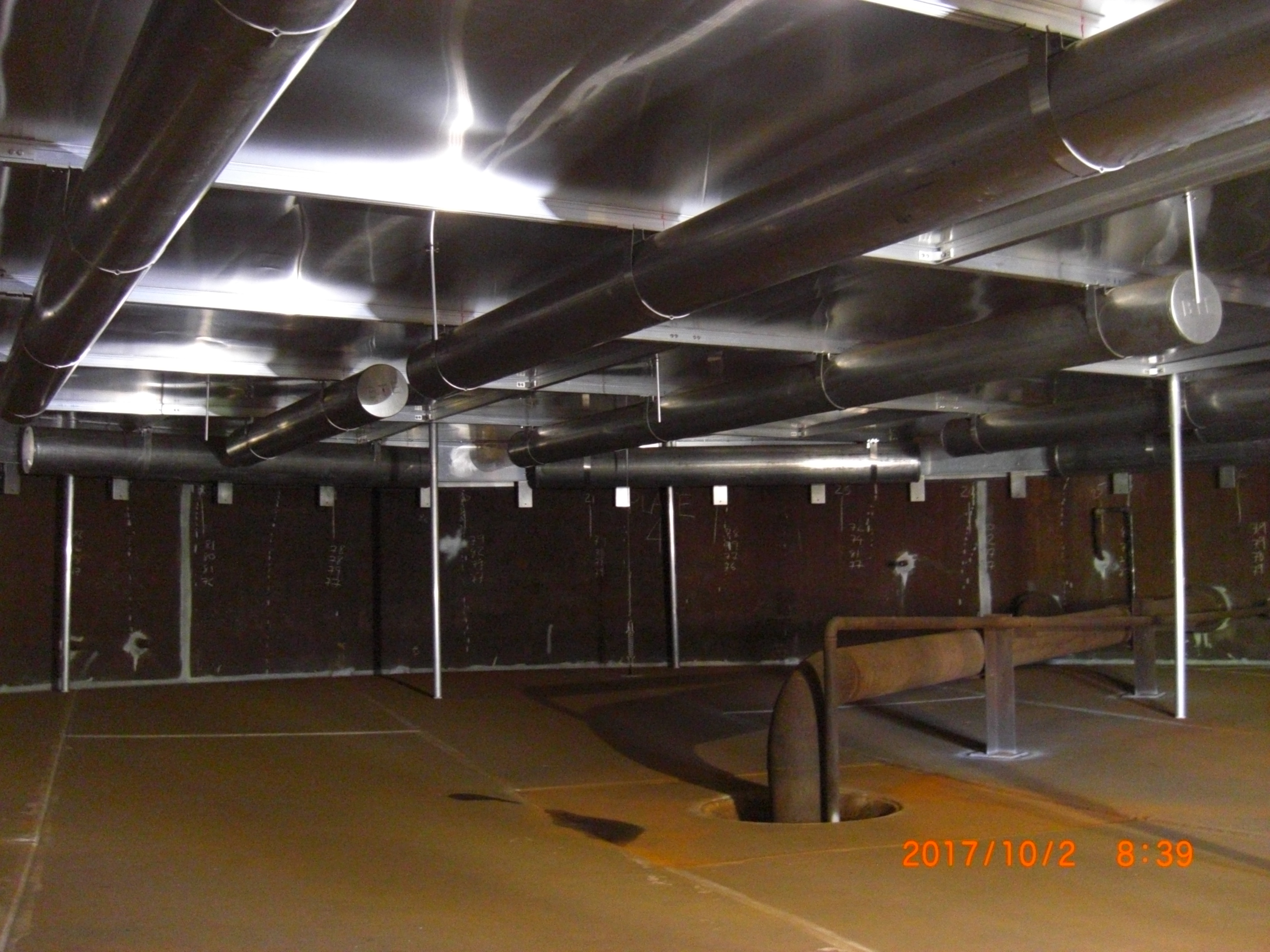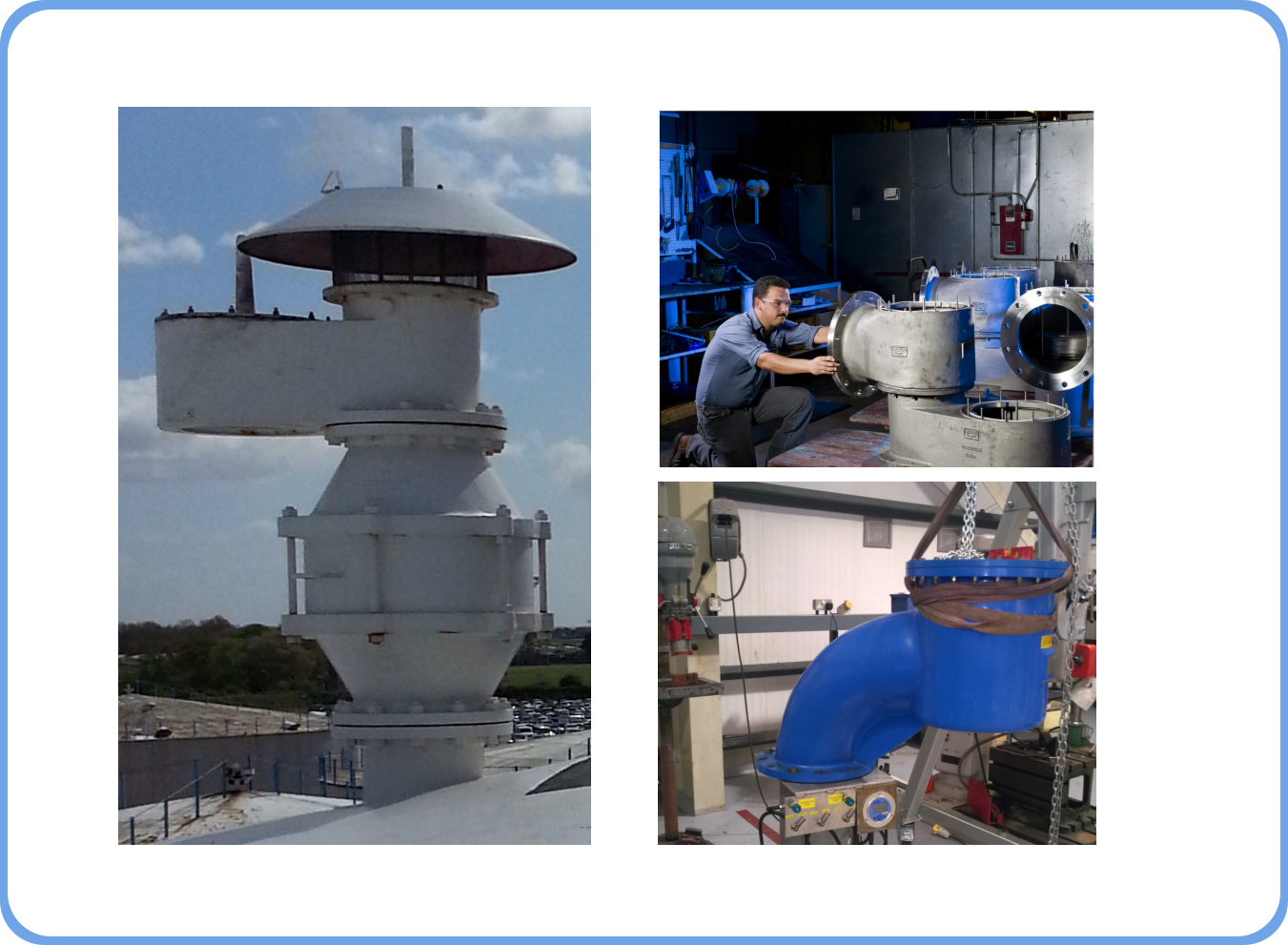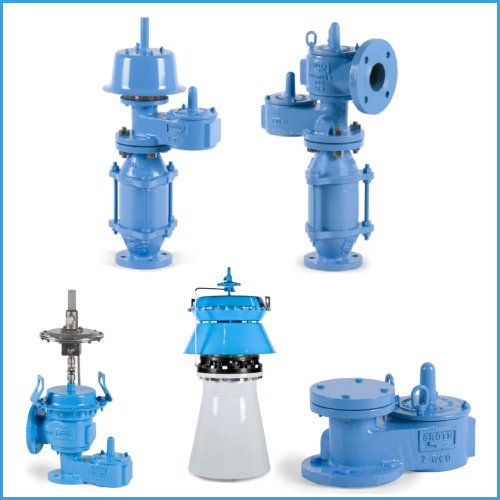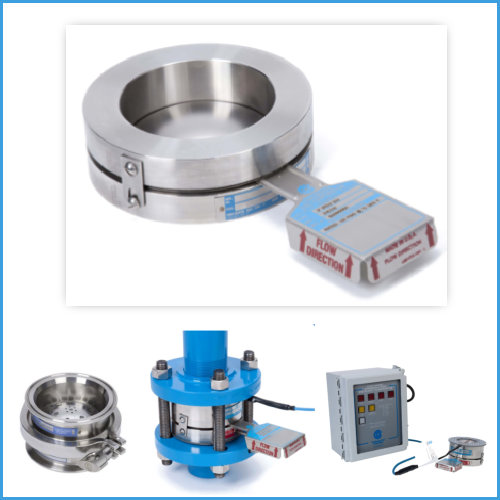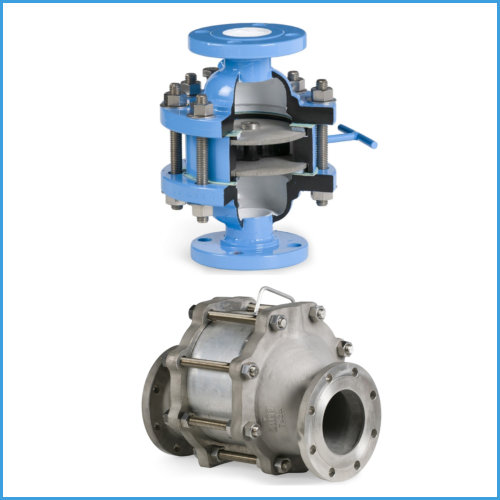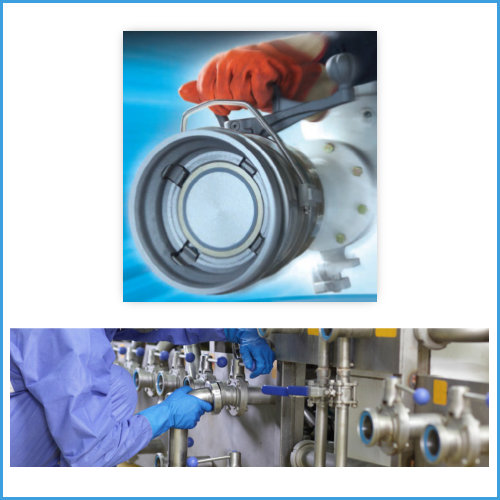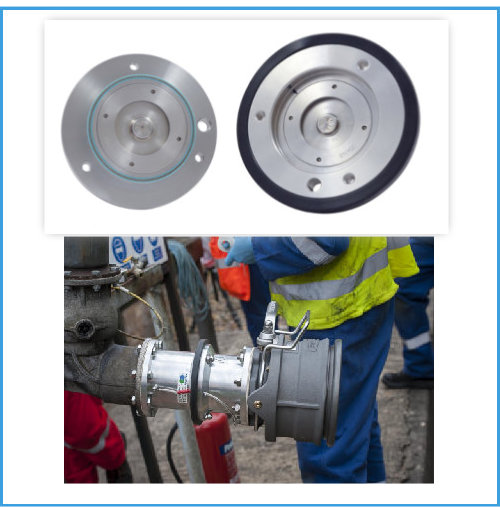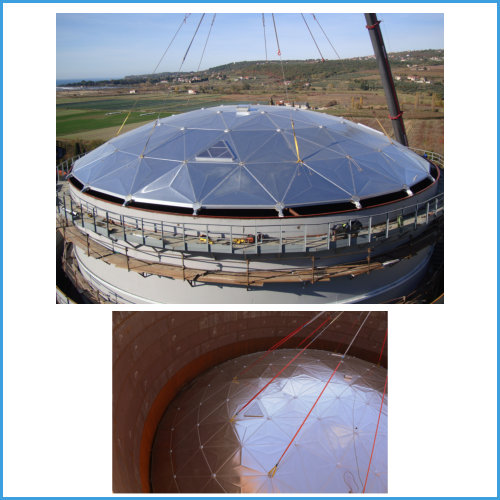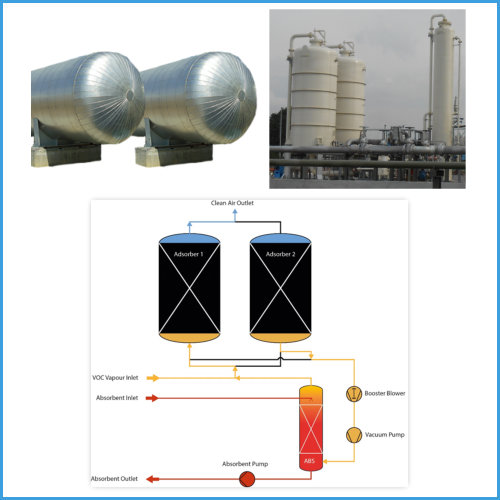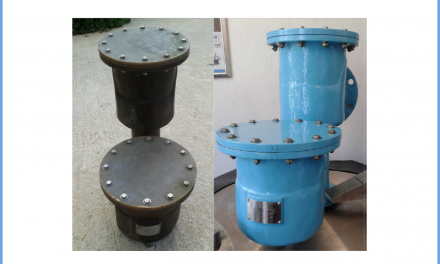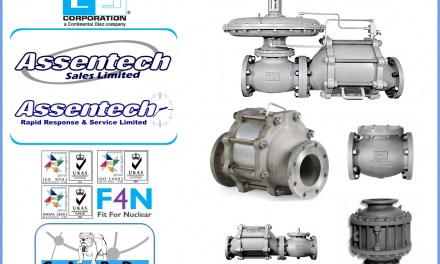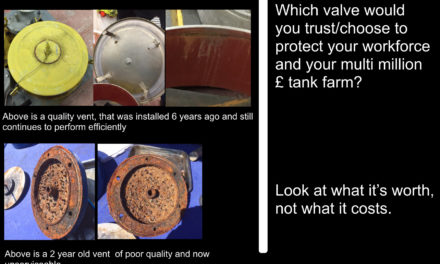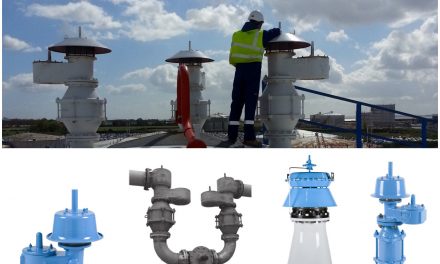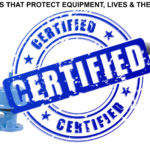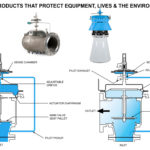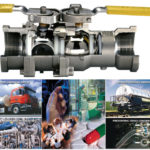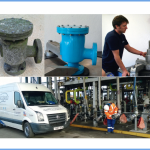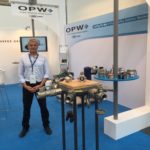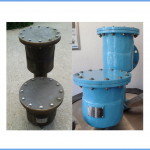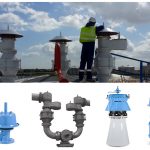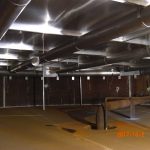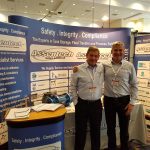Storage Tank Emissions Control: The most important factors to be considered when deciding which IFR to invest in

An internal floating roof, or IFR, comprises a steel or aluminium deck, which floats on or just above the surface of the product within a storage tank. This deck has a seal around the outer edge which is tight enough to form a barrier but flexible enough to allow the deck to rise and fall with product level within the tank.
IFRs are used by Fuel Terminals, Airports, Refineries, Fine Chemical Manufacturers, Sewage Works and anywhere where valuable, volatile, safety critical or finely refined product is stored.
The most important factors to be considered when deciding which IFR
⇒ Design Loading
Tank turbulence, fatigue resistance, floating and landed internal tank inspections demand that a deck is structurally rigid and safe to walk on for at least 2 inspectors. Only a Heavy Duty IFR can manage these loads for over 25 years in service. API 650 requires that IFRs be capable of withstanding a concentrated load of 500lb/ft².
Most of the IFRs available in the market designed to withstand 500lb/ft² while Matrix Applied Technologies Heavy Duty Aluminium IFRs can withstand 1000 lb/ft² exceeding the legislative standards and helping the IFR deals with the worst operating conditions plus making regular inspection and maintenance operations a lot safer , faster and easier to do as we frequently have found that damage to weak IFRs has occurred when workmen have been working on the IFR .
⇒ Operations Plan
The cycle frequency (the inlet/outlet rates of the tank) is a very important key with respect to aluminium internal floating roofs. Aggressive cycle frequency puts more strain on the floating roof, particularly at the rim, so the floating roof must be designed to withstand these loads through its life cycle.
The cheap lightweight internal floating roof wiper seals give normally 3-5 years of service life which undermines the requirement to fit a roof in the first place with excessive vapour emissions. The decks are also very flexible which can cause fatigue in the pontoons potentially leading to sinking. Maintenance activities such as internal tank inspections become complicated because they don’t support the weight of the inspectors walking on the deck leading to the need to fit scaffolding which involves removing part of the deck skin. Costly and time consuming activity.
API 650 Appendix H used to specify a minimum deck sheeting thickness of 0.46mm (0.018”). This was recently increased to a minimum of 0.51mm (0.020”). Experience shows that this is still too thin. Sheeting can corrode over the years depending on ambient air moisture levels. Frequently we have found that damage to thin sheeting has occurred when workmen have been working on the IFR. Matrix Applied Technologies uses 0.6mm (0.024”) sheet as standard, with other thicknesses available on application. We believe that 0.6mm sheet offers a reasonable compromise between cost, weight & strength.
Plus Matrix Applied Technologies heavy duty IFRs use Extruded Rims, the Heavy duty rim we use in our IFRs is better able to resist deformation caused by wave action in the tank. Frequent wave action occurs in the tank due to turbulence caused by pumping, use of gas mixers and gas slugs. These events especially gas slugs have been known to cause serious damage to lightweight sheet metal IFR rims. Having an Extruded Rims allow easy fitment of shoe seal without rim reinforcement.
⇒ Modifications & Maintenance
When investing in an IFR, there is never 100% certainty of what the future holds for the tank. It may in the future be subject to a change of duty or change of the operating conditions.
Many of the IFR’s offered by our competitors have structural integrity which relies upon the collective strength of the integral components. This is not a long term solution as it makes future repairs or modifications impossible – after all, you should be able to change your windows at home without the house falling down.
Matrix Applied Technologies Heavy Duty IFR is the result of 25 years of practical tank experience and designed to withstand the most extreme operating conditions so when using our IFRs the last thing you worry about is “will the IFR coup with the new changes in the operation/production plan”? Because the answer is YES it will.
⇒ Emissions profile
There is no question that selecting the correct combination of floating roof and seal can save significant money and result in faster payback on capital investment. That said, understanding Environmental Protection Agency (EPA) and other governmental regulations is imperative.
The Matrix Applied Technologies Full Contact Roof uses a unique & easy patent-pending panel to panel bolted connection system with continuous sealing between the panels, ensuring leak free seams.
Usually a polyurethane wiper seal last between 2 and 6 years before seriously gapping at the rim allowing vapours into the space above the IFR and increasing the possibility that vapour concentration may rise to the explosive range.
The Matrix Applied Technologies stainless steel shoe seal is a reliable solution to this problem. Based on experience with shoe seals in External Floating Roof Tanks (EFRTs), we estimate the life of this seal to be in excess of twenty years.
⇒ Budget
When considering the budget, it is very important to consider both budgets:
1- The capital budget used to construct and install the roof.
2- The on-going operating budget used for the service and maintenance of the IFR over its lifecycle.
While minimising capital outlay may help on the front end, it will very likely result in greater expense in roof repairs, coating, outright replacement or emissions over the lifecycle of the asset.
Conducting a full cost of ownership analysis is a best practice that will save money in the long run.
More… about Storage Tanks Emission Control please check out
Matrix Technologies Heavy Duty Internal Floating Roof (IFR)
The advantages of the Matrix Technologies Heavy Duty Internal Floating Roof (IFR) COMPARED with other IFR types.
STORAGE TANK EMISSIONS CONTROL-SOME OF THE MANY DESIGN PROBLEMS THAT EXIST IN OTHER WELL-KNOWN IFR BRANDS
“The bitterness of the poor quality remains longer than the sweetness of low price is forgotten” Benjamin Franklin
Emission Control: BREATHER VALVES – VENTS / FROM LEGISLATING COMPLIANCE PERSPECTIVE
From a legislative compliance perspective, when a breather vent is installed on a tank it has to perform according to the Standard to which the tank was built, ie, tanks are likely to be designed…
Assentech supply, install and service full range of storage tank and fluid transfer equipment in the UK and Europe.
Some of our customers testimonials
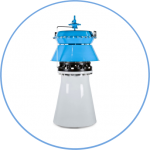 Assentech- pilot operated pressure relief valves service and calibration
Assentech- pilot operated pressure relief valves service and calibration
After conducting a Third Party Witness Inspection, I was most impressed with Ewart and his team, their professionalism, and product knowledge I found to be excellent.
Ian Johnston
 Assentech- Geodesic Dome Installation
Assentech- Geodesic Dome Installation
Assentech were subcontracted to assemble and install a 25m geodesic dome for Shaft G on the Lee Tunnel project. My experience with Assentech from pre-contract through to assembly has been very positive. Unlike other subcontractors I have experienced on this project, Assentech had a very positive attitude to producing the level of documentation required for a project of this scale. Leading to a high quality pre construction packaged approved in a timely manner. The communication regarding the manufacturing process was first class allowing us to easily plan our works and prepare the site. Dome assembly was carried out very efficiently and completed to programme. The task was correctly resourced and well supervised. The work force had a positive attitude and carried out the task safely. In summary from my perspective it has been a very easy subcontract to manage with a high quality finished product.
Robert Colthorpe
 Assentech wins supplier excellence award from Eastman Chemicals
Assentech wins supplier excellence award from Eastman Chemicals
We were extremely pleased with the level of service and professionalism demonstrated by Assentech, right from our initial enquiry, through delivery and post installation. As a recipient of only two of these awards made by Eastman Chemical Company in the UK, based on performance in 2014, Assentech are rightly proud of their achievements.
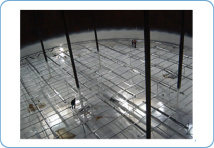 Assentecha-IFR Installations at Vopak, Teesside
Assentecha-IFR Installations at Vopak, Teesside
As you said “you delivered what it said on the tin”. On time and on budget. Your up front engineering to determine the suitability of your product for our application was second to none, i have not seen anyone else in the industry pay as much attention to detail before you get the purchase order number as Assentech.
Garry Lee
 Assentech–IFR Installations at Navigator Terminals
Assentech–IFR Installations at Navigator Terminals
Assentech have supported our Navigator Terminal (formerly known as Vopak Teesside) on two important ~
projects by providing technical assistance and supplying and fitting a total of 11 Internal floating roofs. Both projects have been completed on schedule and on budget. Assentech have provided an excellent level of experience and front end engineering support with high quality drawings and documentation. Their specialist on site labour have worked collaboratively with us and Assentech have proven to be open, honest and flexible partners.
We have experience of both their Heavy Duty Pontoon type and Full Contact IFR’s and we continually monitor operation and performance of all lFR units Installed on site and consider the Assentech supplied Matrix brandto be the best in the market with exceptional build quality and rigidity. Our clients have inspected the installations and have always remarked upon the build quality and have been impressed with their strength in fully supporting up to four people without noticeable deformation. The design and construction of their stainless steel shoe seals continue to prove to operate excellently with no noticeable reduction in performance or flotation ability over the time since Installation.
Assentsch have proven to be extremely competitive on price and their installation and inspection activities have always been thorough. Navigator therefore have no hesitation in recommending Assentech to other companies considering their services.
Brian Beddow

